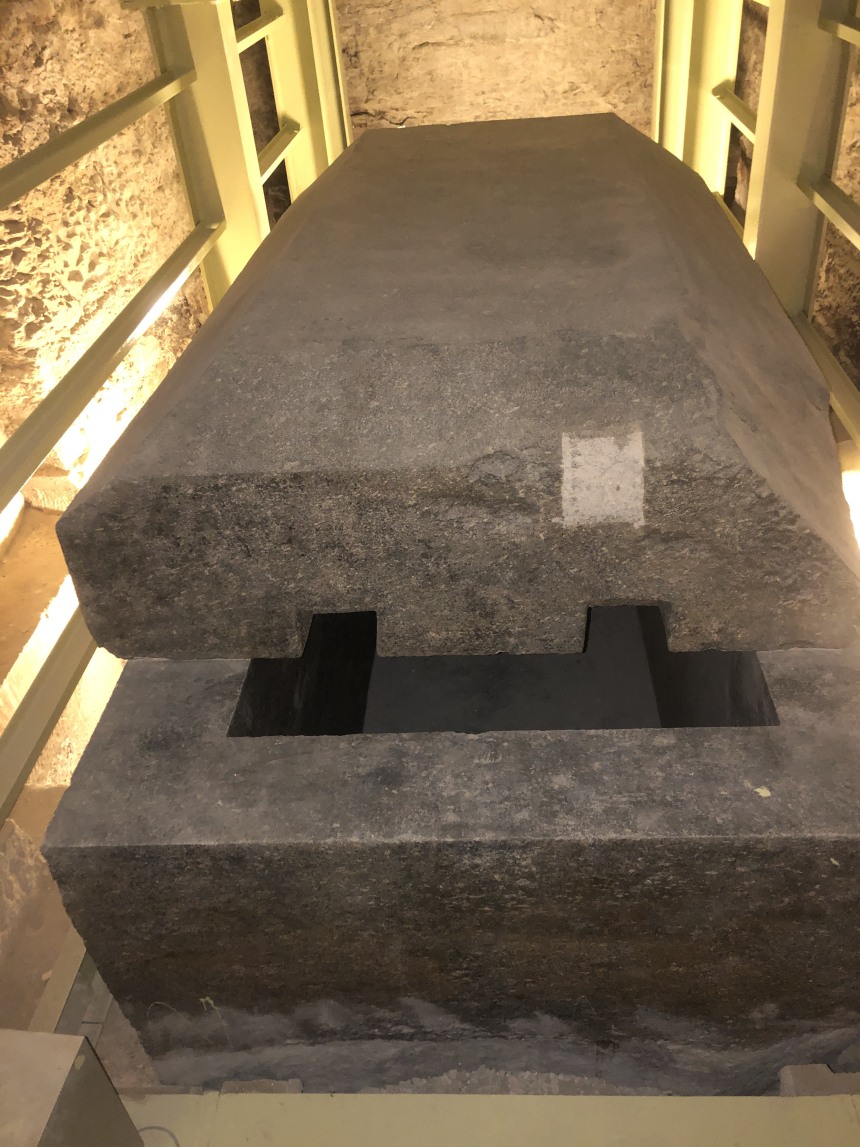
Located to the north-west of the step pyramid, the Serapeum was formed by a long underground gallery with side chambers, each containing an enormous granite sarcophagus weighing about 60 tons where the bodies of mummified bulls were interred. These Buils were considered to be deities and on death were therefore mummified and buried in the same way as a pharaoh. Portrayed as a bull with a solar disc between the horns, the centre of the cult of the sacred Apis Bull was in Memphis. In order to be recognized as sacred, the animal had to have certain features that were known only to the priests.
On the death of an Apis Bull, the priests sought out another animal, and the final choice being determined by numerous special characteristics (Herodotus lists some 29), including a white triangle on the forehead, a mark like an eagle on the neck and another in the shape of a crescent moon on its flank. The word Serapeum is the Latin form of the Greek Serapeion and derives from the fact that once the Apis bull had become a divinity after death; it was known as Osor Apis, which the Greeks modified into the name Serapis.
During the Ptolemaic period, statues of Greek poets and philosophers including Plato, Homer, Pindar, Heraclitus and Hesiod were placed in the open near to the Serapeum in the area known as the hemicycle.


